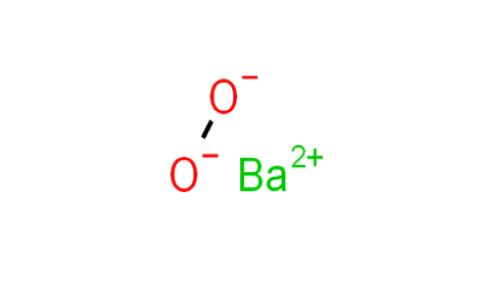Barium Peroxide is a powerful and versatile chemical compound widely utilised in various industrial applications. With the molecular formula BaO2, this white crystalline powder exhibits excellent oxidative properties, making it an essential component in different processes. One of the most common inorganic peroxides, Barium Peroxide was the first peroxide compound discovered. Being an oxidizer and giving a vivid green colour upon ignition (as do all barium compounds), it finds some use in fireworks.

| CAS Number: | 1304-29-6 |
| UN Number: | 1449 |
| Hazard Class: | 5.1 |
| Packing Group: | II |
Physical properties of Barium Peroxide
FAQs
Barium Peroxide serves a variety of industrial purposes, primarily as an oxidizing agent. Its applications include acting as a bleaching agent in the textile industry, an oxidizer in chemical synthesis, a controlled oxygen source in specific applications, and a component in environmental remediation processes. Additionally, it finds use in metal surface treatment.
Barium Peroxide falls under the hazard classification of an oxidizing solid due to its potent oxidizing properties. Consequently, it poses risks, including skin and eye irritation upon direct contact. It is imperative to take adequate precautions to avoid inhalation of dust, and prolonged exposure should be prevented.
Handling Barium Peroxide requires caution, necessitating the use of appropriate personal protective equipment, such as gloves and goggles. It should be used in well-ventilated areas to minimise the risk of inhalation, and proper storage entails keeping it in a cool, dry place away from incompatible materials. Containers should always be tightly sealed to prevent contamination.
Dispose of Barium Peroxide in strict accordance with local, state, and federal regulations. Larger quantities may necessitate professional waste disposal services. Regular household waste or drain disposal is not suitable for Barium Peroxide, and guidance from relevant environmental authorities should be sought for proper disposal methods.
By adhering to these safety measures and disposal guidelines, the potential risks associated with handling Barium Peroxide can be minimised, ensuring a secure working environment and responsible chemical management.
IF YOU WANT TO LEARN MORE ABOUT HOW EAST HARBOUR GROUP LTD CAN HELP YOUR BUSINESS, GET IN TOUCH.
